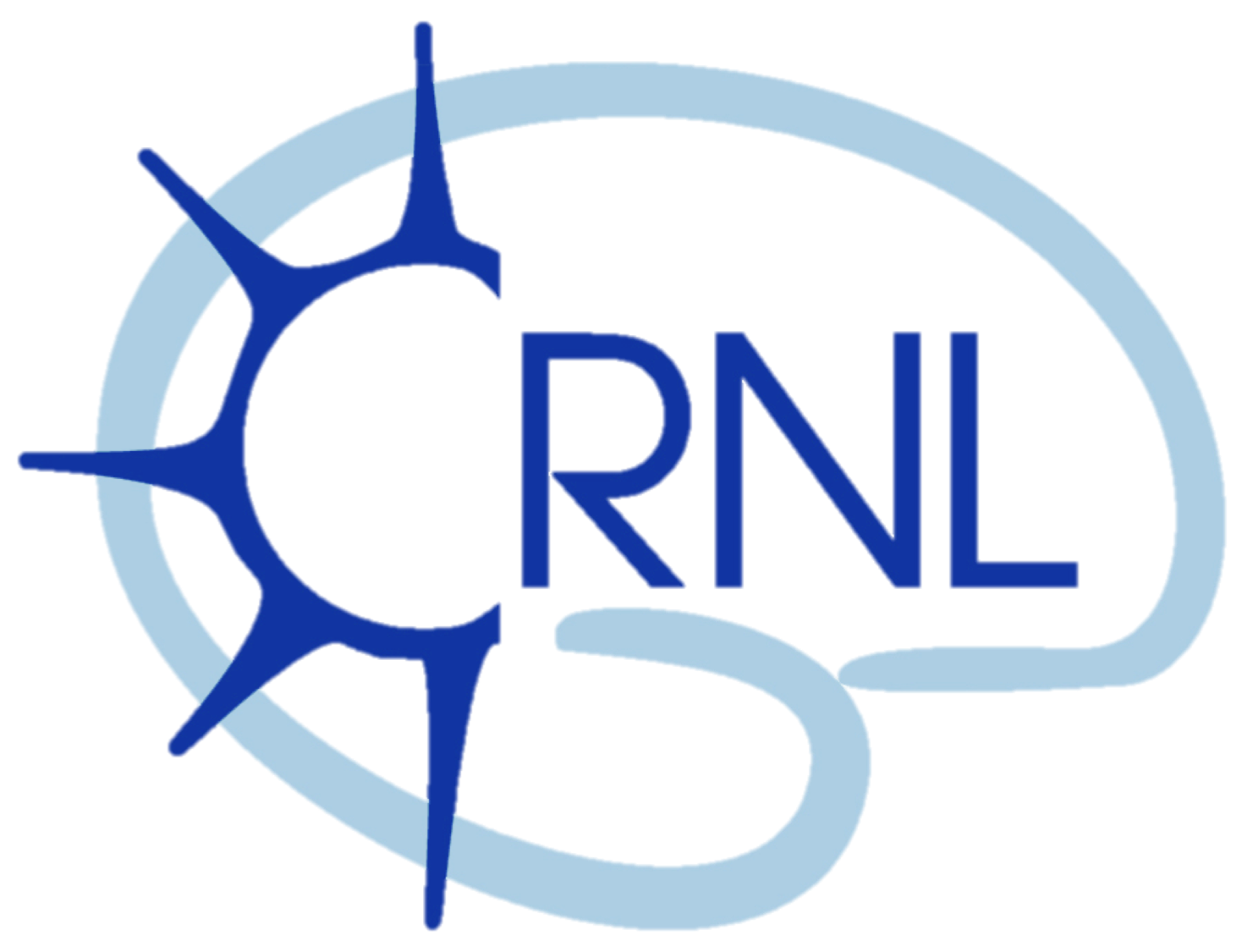Clinical and genetic keys to cerebellar ataxia due to FGF14 GAA expansions
Clés cliniques et génétiques de l'ataxie cérébelleuse causée par des expansions GAA de FGF14
Jean-Loup Méreaux
(1, 2)
,
Claire-Sophie Davoine
(2)
,
David Pellerin
(3, 4)
,
Giulia Coarelli
(2)
,
Marie Coutelier
(2)
,
Claire Ewenczyk
(2)
,
Marie-Lorraine Monin
(5)
,
Mathieu Anheim
(6, 7)
,
Isabelle Le Ber
(2)
,
Stéphane Thobois
(8, 9)
,
Florent Gobert
(10)
,
Léna Guillot-Noël
(2)
,
Sylvie Forlani
(2)
,
Ludmila Jornea
(2)
,
Anna Heinzmann
(5)
,
Aude Sangare
(2, 5)
,
Bertrand Gaymard
(5)
,
Lucie Guyant-Maréchal
(11, 12)
,
Perrine Charles
(5)
,
Cecilia Marelli
(13, 14)
,
Jérôme Honnorat
(15, 16)
,
Bertrand Degos
(17, 18)
,
François Tison
(19, 20)
,
Sophie Sangla
(21)
,
Marion Simonetta-Moreau
(22, 23, 24)
,
François Salachas
(5, 2)
,
Maya Tchikviladzé
(5)
,
Giovanni Castelnovo
(25)
,
Fanny Mochel
(2, 26, 5)
,
Stephan Klebe
(27)
,
Anna Castrioto
(28, 29)
,
Silvia Fenu
(30)
,
Aurélie Méneret
(26, 2, 5)
,
Frédéric Bourdain
(31)
,
Marion Wandzel
(32)
,
Virginie Roth
(33)
,
Céline Bonnet
(34, 35, 36)
,
Florence Riant
(37)
,
Giovanni Stevanin
(38)
,
Sandrine Noël
(5)
,
Anne-Laure Fauret-Amsellem
(5)
,
Melanie Bahlo
(39)
,
Paul J Lockhart
(40, 41)
,
Bernard Brais
(4)
,
Mathilde Renaud
(42, 43)
,
Alexis Brice
(2)
,
Alexandra Durr
(2)
1
SU FSI -
Sorbonne université - Faculté des Sciences et Ingénierie
2 ICM - Institut du Cerveau = Paris Brain Institute
3 UCL - University College of London [London]
4 McGill University = Université McGill [Montréal, Canada]
5 CHU Pitié-Salpêtrière [AP-HP]
6 IGBMC - Institut de génétique et biologie moléculaire et cellulaire
7 IGBMC - Institut de Génétique et de Biologie Moléculaire et Cellulaire
8 Service d'Electroneuromyographie et Service de Neurologie C [Hôpital Pierre Wertheimer - HCL]
9 ISC-MJ - Institut des sciences cognitives Marc Jeannerod - Centre de neuroscience cognitive - UMR5229
10 CRNL - Centre de recherche en neurosciences de Lyon - Lyon Neuroscience Research Center
11 GPMCND - Génomique et Médecine Personnalisée du Cancer et des Maladies Neuropsychiatriques
12 CNRMAJ - Centre national de référence pour les malades Alzheimer jeunes
13 UM - Université de Montpellier
14 CHRU Montpellier - Centre Hospitalier Régional Universitaire [Montpellier]
15 Centre de Référence Maladie Rare "Syndromes neurologiques Paranéoplasiques"
16 UCBL - Université Claude Bernard Lyon 1
17 Hôpital Avicenne [AP-HP]
18 Université Sorbonne Paris Nord
19 IMN - Institut des Maladies Neurodégénératives [Bordeaux]
20 CHU de Bordeaux Pellegrin [Bordeaux]
21 Fondation Ophtalmologique Adolphe de Rotschild
22 ToNIC - Toulouse NeuroImaging Center
23 Département Neurologie [CHU Toulouse]
24 CIC 1436 - Centre d'investigation clinique de Toulouse
25 CHU Nîmes - Hôpital Universitaire Carémeau [Nîmes]
26 SU - Sorbonne Université
27 Uniklinik Essen - Universitätsklinikum Essen [Universität Duisburg-Essen]
28 GIN - [GIN] Grenoble Institut des Neurosciences
29 CHUGA - Centre Hospitalier Universitaire [CHU Grenoble]
30 Fondazione IRCCS Istituto Neurologico "Carlo Besta"
31 CHCB - Centre Hospitalier de la Côte Basque
32 MaMEA Nancy-Brabois - Centre de référence des maladies héréditaires du métabolisme
33 Service de Génétique Médicale [CHRU Nancy]
34 TSE-R - Toulouse School of Economics
35 UT Capitole - Université Toulouse Capitole
36 INRAE - Institut National de Recherche pour l’Agriculture, l’Alimentation et l’Environnement
37 NeuroDiderot (UMR_S_1141 / U1141) - Maladies neurodéveloppementales et neurovasculaires
38 Institute of Human Genetics
39 WEHI - The Walter and Eliza Hall Institute of Medical Research
40 MCRI - Murdoch Children's Research Institute
41 University of Melbourne
42 Service de Génétique [CHRU Nancy]
43 NGERE - Nutrition-Génétique et Exposition aux Risques Environnementaux
2 ICM - Institut du Cerveau = Paris Brain Institute
3 UCL - University College of London [London]
4 McGill University = Université McGill [Montréal, Canada]
5 CHU Pitié-Salpêtrière [AP-HP]
6 IGBMC - Institut de génétique et biologie moléculaire et cellulaire
7 IGBMC - Institut de Génétique et de Biologie Moléculaire et Cellulaire
8 Service d'Electroneuromyographie et Service de Neurologie C [Hôpital Pierre Wertheimer - HCL]
9 ISC-MJ - Institut des sciences cognitives Marc Jeannerod - Centre de neuroscience cognitive - UMR5229
10 CRNL - Centre de recherche en neurosciences de Lyon - Lyon Neuroscience Research Center
11 GPMCND - Génomique et Médecine Personnalisée du Cancer et des Maladies Neuropsychiatriques
12 CNRMAJ - Centre national de référence pour les malades Alzheimer jeunes
13 UM - Université de Montpellier
14 CHRU Montpellier - Centre Hospitalier Régional Universitaire [Montpellier]
15 Centre de Référence Maladie Rare "Syndromes neurologiques Paranéoplasiques"
16 UCBL - Université Claude Bernard Lyon 1
17 Hôpital Avicenne [AP-HP]
18 Université Sorbonne Paris Nord
19 IMN - Institut des Maladies Neurodégénératives [Bordeaux]
20 CHU de Bordeaux Pellegrin [Bordeaux]
21 Fondation Ophtalmologique Adolphe de Rotschild
22 ToNIC - Toulouse NeuroImaging Center
23 Département Neurologie [CHU Toulouse]
24 CIC 1436 - Centre d'investigation clinique de Toulouse
25 CHU Nîmes - Hôpital Universitaire Carémeau [Nîmes]
26 SU - Sorbonne Université
27 Uniklinik Essen - Universitätsklinikum Essen [Universität Duisburg-Essen]
28 GIN - [GIN] Grenoble Institut des Neurosciences
29 CHUGA - Centre Hospitalier Universitaire [CHU Grenoble]
30 Fondazione IRCCS Istituto Neurologico "Carlo Besta"
31 CHCB - Centre Hospitalier de la Côte Basque
32 MaMEA Nancy-Brabois - Centre de référence des maladies héréditaires du métabolisme
33 Service de Génétique Médicale [CHRU Nancy]
34 TSE-R - Toulouse School of Economics
35 UT Capitole - Université Toulouse Capitole
36 INRAE - Institut National de Recherche pour l’Agriculture, l’Alimentation et l’Environnement
37 NeuroDiderot (UMR_S_1141 / U1141) - Maladies neurodéveloppementales et neurovasculaires
38 Institute of Human Genetics
39 WEHI - The Walter and Eliza Hall Institute of Medical Research
40 MCRI - Murdoch Children's Research Institute
41 University of Melbourne
42 Service de Génétique [CHRU Nancy]
43 NGERE - Nutrition-Génétique et Exposition aux Risques Environnementaux
Marion Simonetta-Moreau
- Fonction : Auteur
- PersonId : 1370147
- ORCID : 0000-0002-2278-0410
- IdRef : 094641595
Paul J Lockhart
- Fonction : Auteur
- PersonId : 1335445
- ORCID : 0000-0003-2531-8413
Alexandra Durr
- Fonction : Auteur
- PersonId : 758970
- ORCID : 0000-0002-8921-7104
- IdRef : 148675018
Résumé
SCA27B caused by FGF14 intronic heterozygous GAA expansions with at least 250 repeats accounts for 10-60% of cases with unresolved cerebellar ataxia. We aimed to assess the size and frequency of FGF14 expanded alleles in individuals with cerebellar ataxia as compared with controls and to characterize genetic and clinical variability.
We sized this repeat in 1876 individuals from France sampled for research purposes in this cross-sectional study: 845 index cases with cerebellar ataxia and 324 affected relatives, 475 controls, as well as 119 cases with spastic paraplegia, and 113 with familial essential tremor.
A higher frequency of expanded allele carriers in index cases with ataxia was significant only above 300 GAA repeats (10.1%, n = 85) compared with controls (1.1%, n = 5) (p < 0.0001) whereas GAA250-299 alleles were detected in 1.7% of both groups. Eight of 14 index cases with GAA250-299 repeats had other causal pathogenic variants (4/14) and/or discordance of co-segregation (5/14), arguing against GAA causality. We compared the clinical signs in 127 GAA≥300 carriers to cases with non-expanded GAA ataxia resulting in defining a key phenotype triad: onset after 45 years, downbeat nystagmus, episodic ataxic features including diplopia; and a frequent absence of dysarthria. All maternally transmitted alleles above 100 GAA were unstable with a median expansion of +18 repeats per generation (r2 = 0.44; p < 0.0001). In comparison, paternally transmitted alleles above 100 GAA mostly decreased in size (-15 GAA (r2 = 0.63; p < 0.0001)), resulting in the transmission bias observed in SCA27B pedigrees.
SCA27B diagnosis must consider both the phenotype and GAA expansion size. In carriers of GAA250-299 repeats, the absence of documented familial transmission and a presentation deviating from the key SCA27B phenotype, should prompt the search for an alternative cause. Affected fathers have a reduced risk of having affected children, which has potential implications for genetic counseling.
Domaines
Sciences du Vivant [q-bio]
Origine : Fichiers produits par l'(les) auteur(s)
licence : CC BY NC - Paternité - Pas d'utilisation commerciale
licence : CC BY NC - Paternité - Pas d'utilisation commerciale





